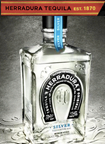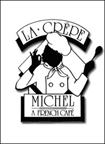
Reducing
Sodium in the Foods You Buy
By FBWorld Team
Ongoing
Challenge Faced by Food Manufacturers
Food
and beverage product developers are still challenged as
to which tools to use in order to reduce sodium content
in packaged goods. The challenge many face is selecting
the right solution that will work best within the constraints
of the application, budget and processing capabilities
currently available. Adding to the challenge is the pace
with which sodium reduction technologies are evolving.
Change
doesn't happen overnight, but since public health officials
have promoted the need for some consumers to reduce the
amount of sodium in their diets, ingredient suppliers
have been working to provide product developers with tools
to reduce the sodium content in formulated products. There
are several technologies that have been developed, but
Christopher Loss, Ph.D., said there are no silver bullets.
As a professor in the Department of Culinary Science and
director of Menu Research and Development at the Culinary
Institute of America, Hyde Park, NY, Dr. Loss said "reducing
sodium is only one of the things we need to do (for better
health), but in general, it seems like a good idea."
Ironically,
consumers don't taste all of the sodium in their food
- people only perceive about 20%. So when it comes to
flavor perception, "it's a very personal interaction,"
Dr. Loss said. "Neurobiologists and other scientists
recognize there are extreme differences in our individual
perceptions of food. Now we're talking about genomes and
one of the largest genome families is the flavor genome
- so there's this extreme variability of how we perceive
food."
Some
consumers tend to think "flavor" is a molecule
in food, but Dr. Loss said flavor perception is in our
heads.
"Since
flavor is ultimately a 'top down' process, you have to
think about the psychological factors," he said.
Dr.
Loss and Shirley Cheng, a culinary arts professor at the
CIA, were interested in seeing if they could amplify the
perception of salt or enhance a product's overall flavor
and allow them to reduce the salt component "by creating
a more multi-sensorial experience," he said.
Ms.
Cheng had been studying the flavor profile of huajiao,
also known as Sichuan pepper, that when consumed creates
a tingling sensation. She found such kinesthetic compounds
as capsicum in chili peppers cause tactile sensations
in the mouth. Ms. Cheng and Dr. Loss set out to tingle
the pain receptors in the tongue.
"Shirley
thought if we add huajiao it may amplify the perception
of salt since it causes a tingling sensation," Dr.
Loss said.
"Mala"
is one of the flavor profiles in Szechuan cuisine. "Ma"
refers to the tingle sensation people perceive from the
huajiao and "la" refers to the heat from the
capsicum in the chili pepper. Both elicit a heating/buzzing
sensation on the tongue.
The
two researchers aimed to develop seasoning profiles designed
to distract the palate. They chose french fries as their
initial target.
"Shirley
added 'ma' and the 'la' in a seasoning blend with less
sodium," Dr. Loss said. "Our tasting panel found
the hedonic quality was the same with reduced sodium."
Potassium
Offers Potential
Dr.
Loss iterated his contention that there is no silver bullet
to sodium reduction.
"On
its own, potassium chloride is often perceived as slightly
bitter/metallic, so that means it has to be used in a
percentage so as not to change our liking for the food,"
he said. "Yes, potassium chloride is in our tool
box; we should look at it as one approach to reducing
sodium - and we have to know how consumers will respond
to it."
At
Nu-Tek Food Science, taking a technology-driven solution
for sodium reduction for processed foods was the plan
and the result has been positive, with sodium reduction
by as much as 50% in some products without sacrificing
taste, said Don Mower, president and chief operating officer
of the Minnetonka, Minn.-based company. In fact, one of
the company's products, Salt for Life, which is a consumer
product, has 136 milligrams of sodium per-serving vs.
590 milligrams of sodium in regular table salt and more
than 500 milligrams of sodium in other sea salts. Salt
for Life is intended to be used like regular salt with
the same amounts in recipes.
Credit
for the Nu-Tek sodium reduction solution goes to Sam Rao,
a 40-year food service industry veteran.
"After
Dr. Sam retired, he worked with our chairman and c.e.o.
Tom Manuel to address sodium reduction differently, that
is, with a potassium chloride-based solution," Mr.
Mower said.
Noting
that most American consumers consume about twice as much
sodium as they should, but only about half as much potassium
as they need - the substitution should be a good thing,
he said.
"Potassium
chloride is just another salt and we have to call it that
on the label - but it's just potassium."
Josh
Hobbs, Nu-Tek's Internal Research Chef, said potassium
chloride is identified as GRAS (generally recognized as
safe) by the Food and Drug Administration, with a history
of being safe.
Nu-Tek's
proprietary technology is designed to block the metallic
taste caused by potassium. As a result, food manufacturers
may use it in larger amounts.
"You
can take out one pound of salt and replace it with our
Nu-Tek (solution)," Mr. Mower said. "You've
reduced salt by about 40% to 50% - it's an incredibly
elegant solution."
Today,
the Nu-Tek salt reduction product is out in the marketplace
as a component of many brands Mr. Mower said.
"Food
manufacturers don't want their competition to know what
they are doing, but we're working with 18 of the top 20
global consumer packaged foods companies as well as with
five of the top 10 QSRs," he said.
"There's
not a 10¢ solution for salt," Mr. Mower said.
"Expect that if you're reducing sodium in food, it
will be about 1¢ per-pound higher, or about 1/8¢
more per-serving.
Particle
Engineering
Changing
the shape and, more importantly, optimizing the bulk density
of the salt crystal is the name of the game changer in
salt reduction.
SODA-LO
Salt Microspheres is produced by Tate & Lyle, the
Hoffmann Estates, Ill.-based ingredient manufacturer.
Winner of the Institute of Food Technologists' Innovation
Award 2013, SODA-LO Salt Microspheres is a sodium-reducing
ingredient that's been in the marketplace since 2010 and
commercialized since September 2012.
Although
people swallow the whole salt crystal, only part of it
interacts with the taste buds. But the tiny, hollow spheres
of SODA-LO Salt Microspheres, "interact with our
taste buds more effectively and dissolve more efficiently,"
said Judy Turner, Tate & Lyle's director of specialty
food ingredient applications. "You get the clean
salt taste you love but consume less of it."
Since
consumers get most of their salt from processed foods,
Ms. Turner, along with others on staff, including Justin
Kanthak, manager of culinary development and corporate
chef with Specialty Food Ingredients, partner with food
manufacturer customers.
"SODA-LO
can be labeled as 'salt' on the ingredient statement because
it is salt," Ms. Turner said. "Think of SODA-LO
as a hollow sphere like a ping pong ball vs. a solid crystal
of salt, like a golf ball.
"Mr.
Kanthak added, "You'll be able to reduce salt content
because you taste the outside of the hollow sphere. At
the end of the day, we're providing sodium reduction without
sacrificing flavor."
Customers
may expect anywhere from a 25% to 50% sodium reduction,
depending upon how far they are in their pathway to sodium
reduction.
"We see a lot of our customers start by just reducing
salt, but at some point it impacts the products flavor
or functionality," Ms. Turner said. "That's
when you need SODA-LO Salt Microspheres that tastes, labels
and functions like salt because it is salt."
Clean
Label Focus
Kikkoman
markets its NFE (Natural Flavor Enhancer) as a sodium
reduction option that also allows food processors to maintain
a clean label.
To
produce NFE, Kikkoman began with the essential elements
of its soy sauce and, through a proprietary brewing process,
they reduced the typical soy sauce flavor, aroma and color
to create a neutral savory flavor booster that does not
add a pronounced Asian or soy sauce perception.
Overall,
food processors may reduce sodium content by 30% to 50%
without a loss of flavor intensity when they add umami-rich
Kikkoman NFE liquid or either of the two powder versions.
"Our
product is all the natural acids that occur when you ferment
food - water, wheat, soy beans and salt - those are the
ingredients of our Natural Flavor Enhancer," said
Joe Leslie, industrial sales marketing manager. "These
flavor enhancers work best with milder flavor products
where you don't want the color or flavor of soy sauce."
The
Sweet Side of Sodium Reduction
Fruit
is also an intriguing option when it comes to sodium reduction.
"Fruit is a flavor enhancer (and) by using fruit
chefs can use less salt," said Dieter Preiser, CEC,
AAC, corporate chef for the Dole Food Co., Westlake Village,
Calif. Mr. Preiser, who was the Research Chefs Association's
first president in 1996, often creates fruit salsas or
chutneys to top or accompany pork, chicken and fish.
"When
you add flavor and more spice, you can use less salt in
the preparation," he said.
Mr.
Preiser is especially fond of preparing a pepper jelly
for a rounder flavor.
"You combine lime juice, a bit of cilantro, plus
a bit of diced bell pepper for a bit of color - or you
can leave out the cilantro - then put the 'salsa' on top
of the protein."
Using
fruits such as pineapple and peaches also works as a salt
substitute in rice pilaf and various other rice dishes.
"Acids
from pineapple as well as from other fruits, when used
in cooking, enhance the salt flavor," said Rick Perez,
a corporate chef with Dole.
On
balance, salt and sugar are the cheapest flavor enhancers,
Mr. Preiser said, "and using sugar from fruit - a
natural product - helps reduce the need for salt."
There
may not be a silver bullet, but Americans may finally
take heart that manufacturers now have many tools to effectively
reduce sodium content in innovative ways.
FOR
THE REST OF THE ARTICLE, CLICK HERE
by
Karen Weisberg
Courtesy of Food Business News

|





























